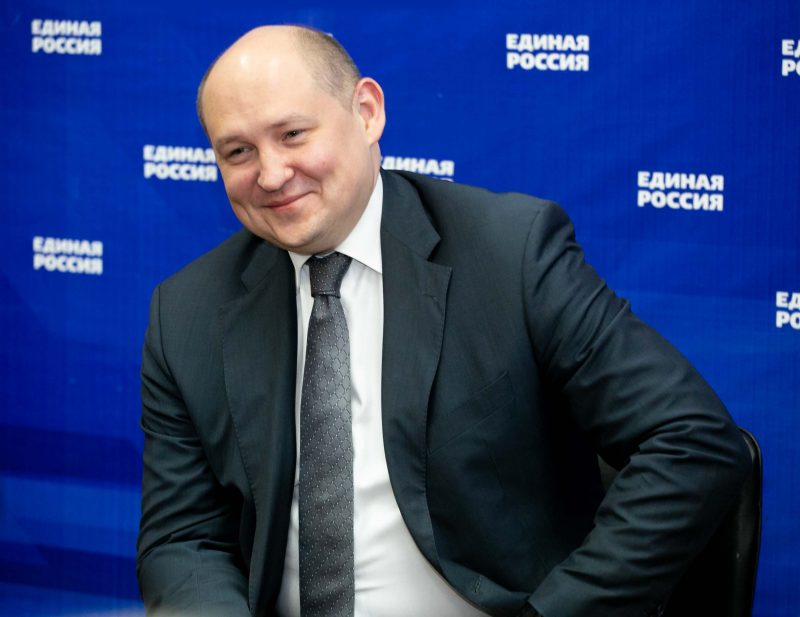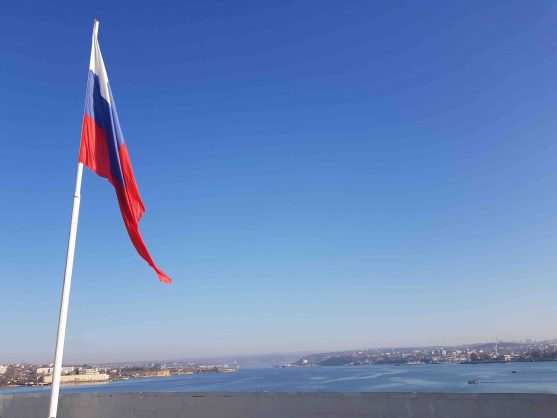Crimea appears to be thriving under the control of Putin’s Russia
Russia is now in charge and it is evident the country is committed to turning Crimea around.
by Rorisang KgosanaRussian Flag at the Konstantin Battery, a military architectural landmark and a museum. It was built in 1840 to defend the entrance of Sevastopol Bay. Picture: Rorisang Kgosana
It has been half a decade since Crimea returned to its homeland Russia. Driving through the small Crimean Peninsula, flag poles with Russia’s blue, white and red flag can be seen waving in random places such as street poles, atop cliffs and mountains and construction sites.
The peninsula, which was for the longest time under Russian rule, plummeted once it joined the Ukraine after the Soviet Union dissolved in 1991. Hundreds of educational institutions in towns and villages closed down, and the agricultural sector plunged as it had no support. Tar roads were damaged and there were no streetlights.
In 2014, the Crimean people took the opportunity to change their government when 95.5% of voters elected to return to the Russian Federation.
That has, however, resulted in sanctions by various countries, retracted international investments and bad media attention. But it is not as gloomy as some have painted it.
Five years on, it is clear citizens have become accustomed to Russian dominance and rule. Construction trucks and building machinery are a common sight in parts of the peninsula, particularly Sevastopol, which was declared Russia’s third and newest federal city after 2014.

The country’s ruling party, the United Russia Party, has boasted about how they have improved the living conditions for the 2.3 million population.
From what they call decline and devastation, five years after the “Crimean Spring”, the small territory beside the Black Sea is undergoing renewal.
Some improvements can be seen from space, such as the 19km Crimean Bridge, which is now the longest bridge in Europe. The $4 billion (R58 billion) project is also the longest bridge ever built by Russia.
Workers can also be seen tirelessly working on the mega-project, the Tavrida highway, a 280km road which will connect Crimea with the Russian mainland.
New medical family outpatient clinics have been established, offering paramedical and midwifery services in villages.
The peninsula now has a renovated airport and two new power plants.
Since the closure of hundreds of educational institutions post-1991, Crimea has now become home to about 22,000 educational facilities for children, explained first deputy secretary of the Crimean division of the United Russia Party, Tsekov Sergey Pavlovich.
“Before 2014, there was practically no support for the agricultural sector and, today, the support is valued at hundreds of millions of rubles. We are reviving the agricultural sector. In 2014, when Ukraine blocked the North Crimean Canal, everyone predicted the full collapse of the agricultural sector in the peninsula. Due to financial support from the state, we can observe growth in almost every field of agriculture.”
This was evident in Sevastopol, which boasts a great winery and has seen a spike in wine production in the past five years, Sevastopol governor Mikhail Razvozhaev told The Citizen.

“This region has a high potential of being the region of wineries. Our harvest this year was more than 20 tons of grapes, which is twice what we produced five years ago. A lot of grape plantations were funded. If you taste the wine from Sevastopol, you would be pleasantly surprised by its quality,” he said.
Despite having old infrastructure and international sanctions barring tourists from using international bank cards and blocked cellphone networks, the warm peninsula, with its history and array of cultures, still attracts tourists each year.
Around half a million tourists visited Sevastopol in the recent summer.
“These are people who have stayed overnight. The ones who come for sightseeing were more than 2 million in the summer. The interest in tourism in this city is growing. It is because there are a lot of museums here which are being developed and becoming better organised, modernised and understandable,” added the governor.
